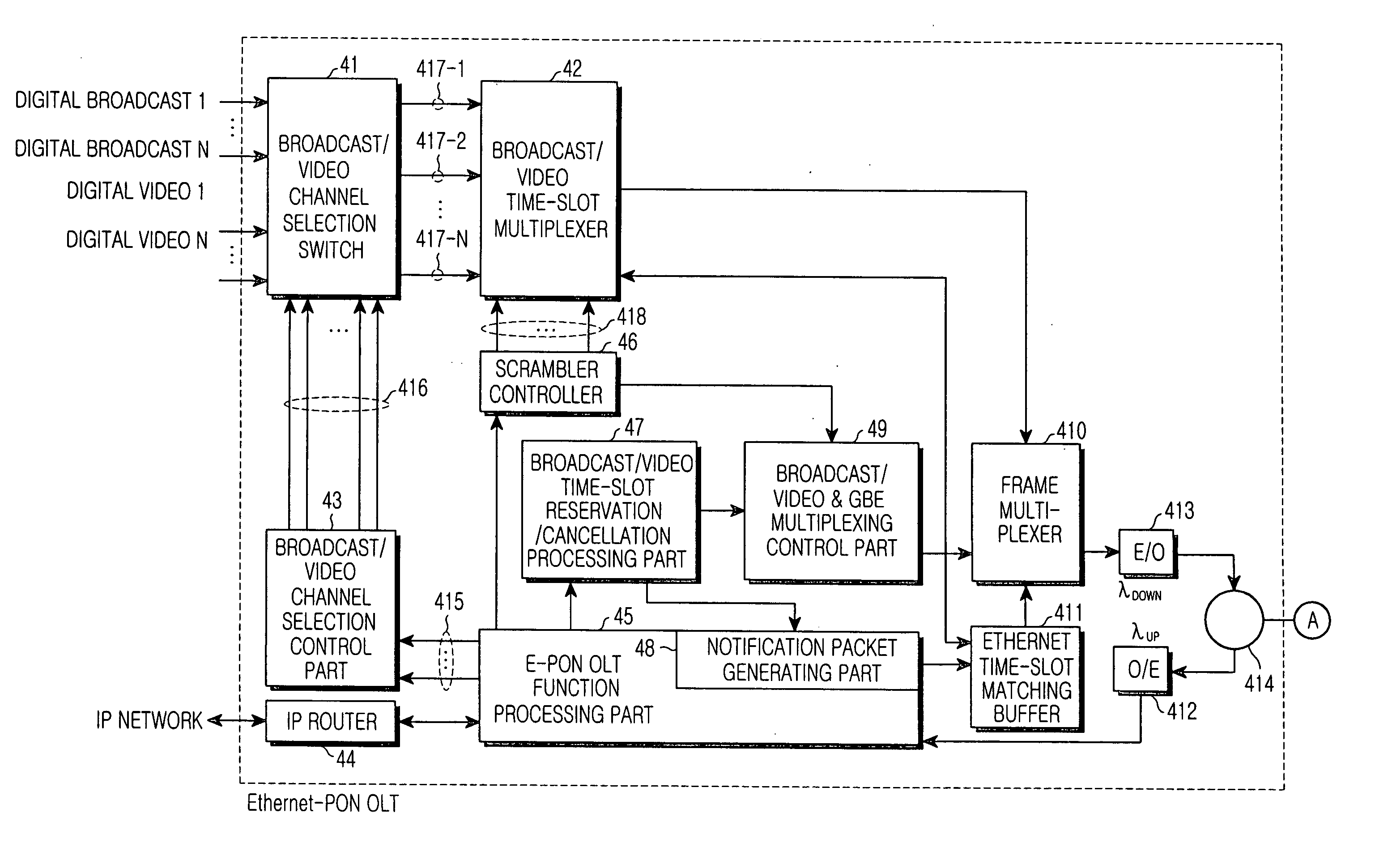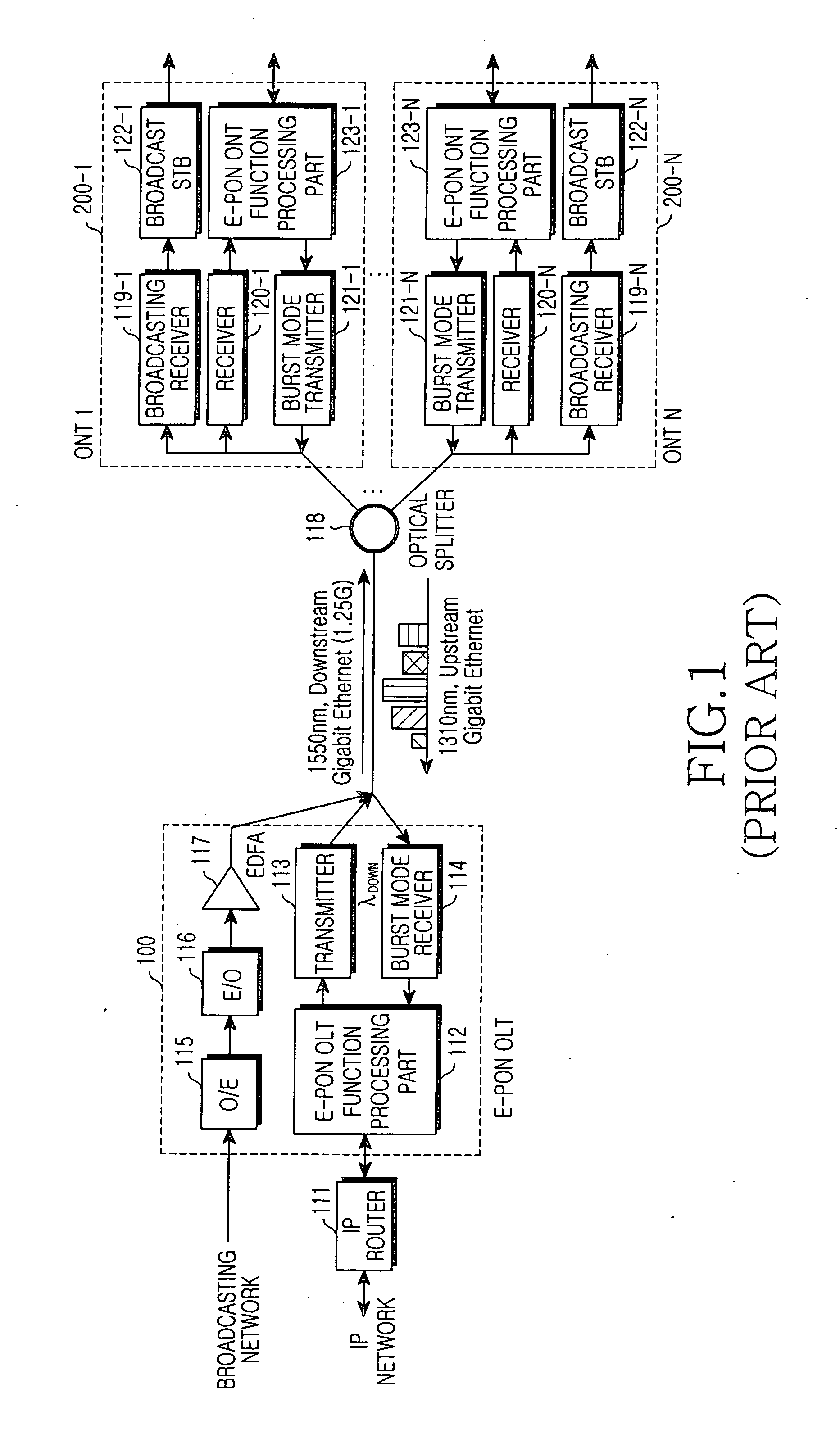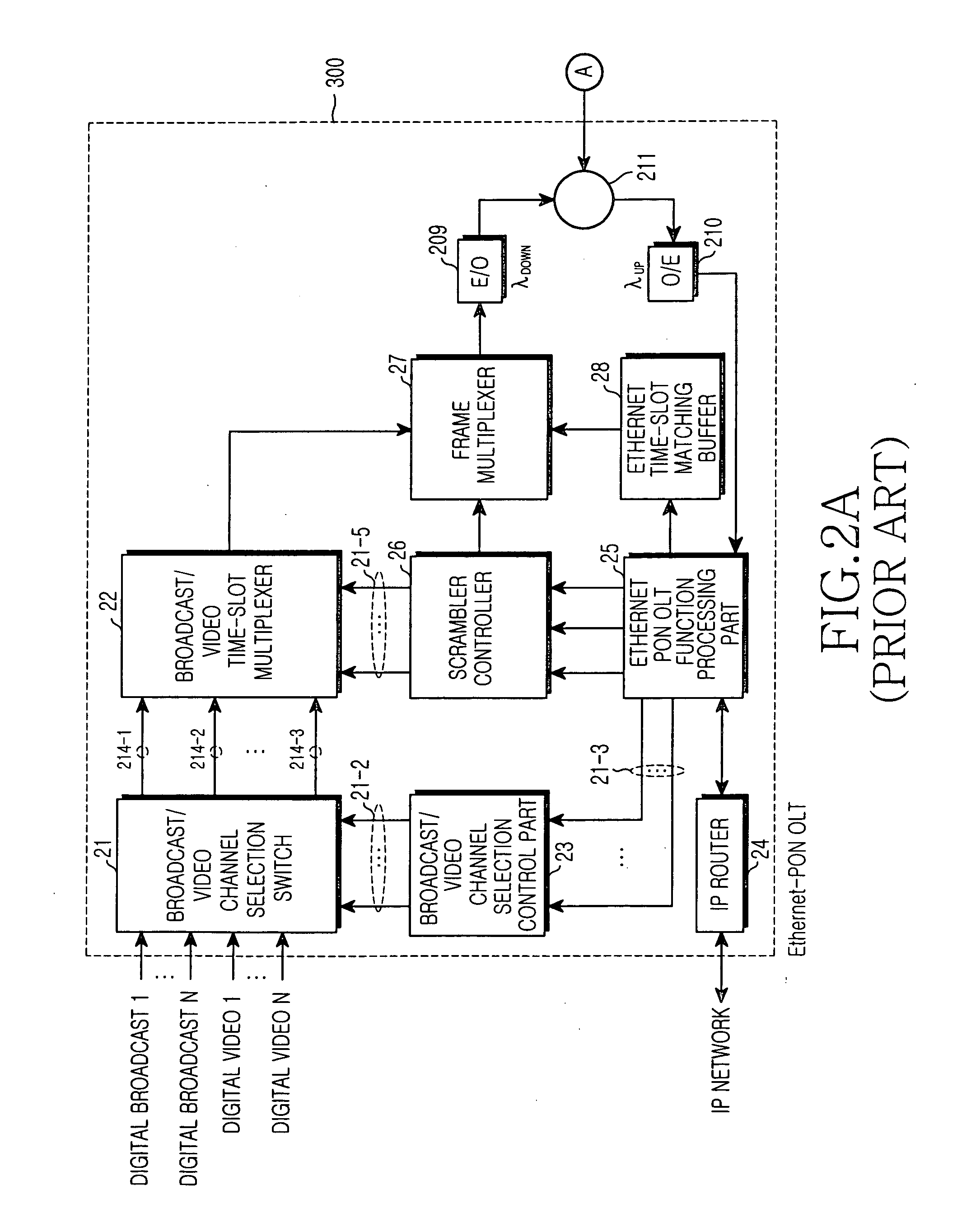Ethernet PON using time division multiplexing to converge broadcasting/video with data
a technology of time division multiplexing and ethernet pon, applied in the field of optical transmission, can solve the problems of difficult processing of high-definition digital video services by conventional ethernet pon, requiring expensive edfa, and unable to meet the challenge of xdsls and cable modems
- Summary
- Abstract
- Description
- Claims
- Application Information
AI Technical Summary
Benefits of technology
Problems solved by technology
Method used
Image
Examples
first embodiment
[0065]FIG. 7 is an exemplary view showing a structure of a frame 71 obtained by multiplexing broadcast / video signals and Ethernet communication signals according to the present invention. The frame 71 includes n time-slots 72-1 to 72-n. The time-slots include broadcast / video sub time-slots 73-1 to 73-n of ONTs and GbE sub time-slots 74-1 to 74-n used for transferring GbE frames (1.25 G Ethernet frames).
[0066] A broadcast / video sub time-slot of a predetermined ith time-slot is assigned for a predetermined ith ONT. If the predetermined ith ONT receives broadcast / video, broadcast / video data are transferred through the broadcast / video sub time-slot of the predetermined ith time-slot. However, if the predetermined ith ONT does not receive broadcast / video, instead of broadcast / video data, GbE communication data are transferred through the broadcast / video sub time-slot of the predetermined ith time-slot. Accordingly, it is possible to efficiently utilize bandwidth according to the present ...
second embodiment
[0068]FIG. 8 illustrates one example of a frame 81 obtained by multiplexing broadcast / video signals and Ethernet communication signals according to the present invention. The frame 81 obtained by multiplexing broadcast / video signals and Ethernet communication signals according to the present invention includes a broadcast / video frame 82 and a communication data frame 83. The broadcast / video frame 82 has broadcast / video sub time-slots 84-1 to 84-n assigned for ONTs. As described with reference to FIG. 7, the broadcast / video sub time-slots 84-1 to 84-n contain GbE communication data rather than broadcast / video data in the event that the predetermined ith ONT does not receive broadcast / video. The above described frames and time-slots can be variously defined depending on the number of broadcast / video channels, etc., selected by a user.
[0069] In order to load the broadcast / video slots with GbE communication data and not broadcast / video data and transfer the GbE communication data when t...
PUM
 Login to View More
Login to View More Abstract
Description
Claims
Application Information
 Login to View More
Login to View More - R&D
- Intellectual Property
- Life Sciences
- Materials
- Tech Scout
- Unparalleled Data Quality
- Higher Quality Content
- 60% Fewer Hallucinations
Browse by: Latest US Patents, China's latest patents, Technical Efficacy Thesaurus, Application Domain, Technology Topic, Popular Technical Reports.
© 2025 PatSnap. All rights reserved.Legal|Privacy policy|Modern Slavery Act Transparency Statement|Sitemap|About US| Contact US: help@patsnap.com



